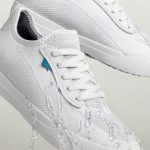The Sports & Fitness Industry Association (SFIA) released its 2023 State of the Industry Report, showing 4.3 percent revenue growth in U.S. wholesale sales of athletic footwear, apparel, sports and fitness equipment, and licensed products in 2022. The gains represent the second-largest percentage growth since 2010, driven by inflation, and marked by a pullback from the record performance of 15.8 percent in 2021.
Total sales are estimated to have reached over $116 billion.
SFIA noted in the report that the 2022 industry growth rate was lower than the current-dollar GDP of 9.2 percent, which, traditionally, the association tracks closely. The dollar figures of both GDP and industry revenues were notedly affected by inflation, which influenced raw materials, labor and logistics costs and final product pricing.
“Last year was a difficult year to categorize. Sports and fitness companies continued to meet strong demand for their products and collectively realized healthy annual growth,” said Tom Cove, president and CEO of SFIA. “At the same time, many SFIA member companies reflected high concern around uncertainties in the marketplace that lasted much longer than anyone anticipated at the beginning of 2022.”
The SFIA report, released today at the SFIA/NCAA/NFHA Team Sports Conference in Indianapolis, IN, reflects executive surveys on various industry-specific indicators.
In 2022, 55.2 percent of companies who responded said they increased profitability, while 28.4 percent said they decreased profitability last year. The 55.2 percent number is the second largest since 2015. For a third consecutive year, the number of respondent companies, 28.4 percent, decreased profitability.
Inventory management was a big story in 2022.
After historically low inventory levels, 67 percent of companies increased inventory levels in 2022—the highest number of companies that had increases in the last decade. Fifty-seven percent of companies increased their R&D investments, a slight decrease from 2021 but still the second-highest number in the previous five years.
In terms of sports and fitness participation rates, more Americans reported participating in physical activities at the core and casual levels, but team and fitness club activity rates have not recovered to pre-pandemic levels.
The report includes attitudinal and forecasting responses from the industry, including the current state of the sports and fitness industry (around 85 percent responded strong or average), the future state of the sports and fitness industry (around 95 percent responded strong or average) and top concerns facing the industry in the future (potential economic recession affecting domestic sales growth and inflation impacts affecting profitability).
Photo courtesy Adidas














